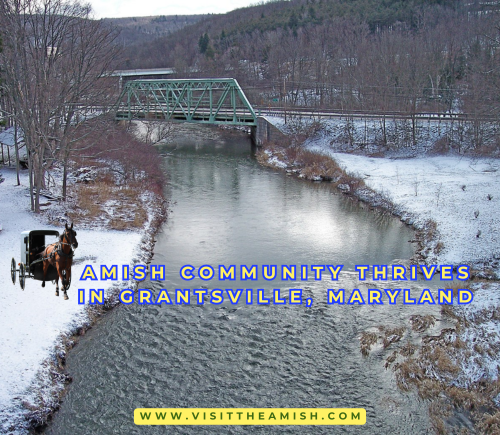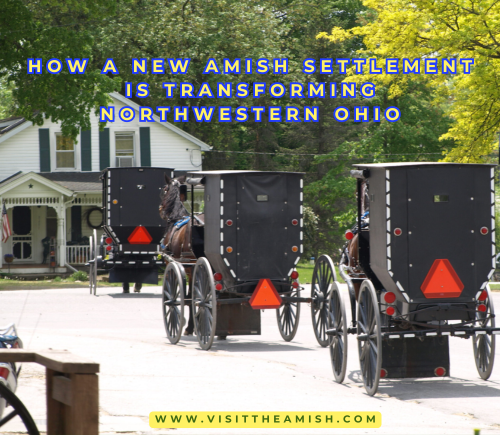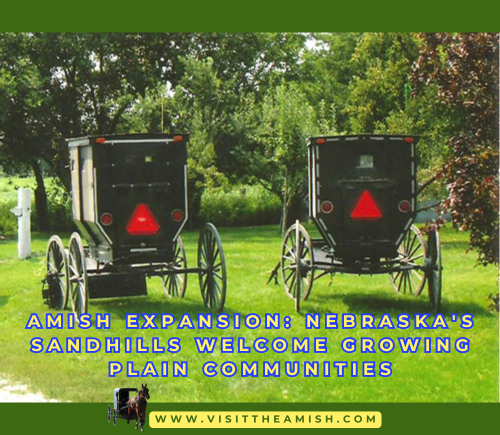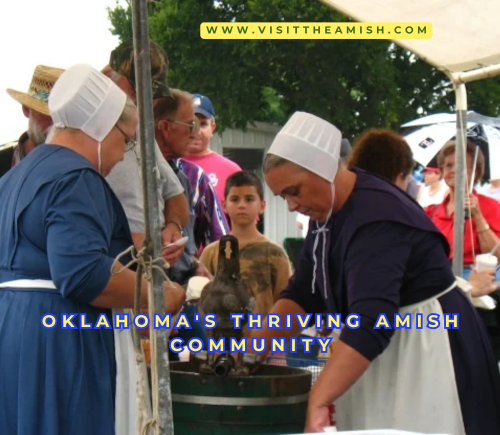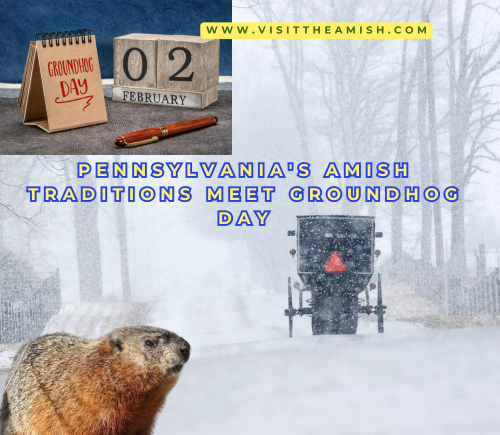Amish Community Thrives in Grantsville, Maryland: A Blend of Tradition and Enterprise
Nestled in the picturesque Appalachian Mountains of western Maryland, the small town of Grantsville has become home to a vibrant Amish community that has been quietly growing and flourishing over the past few decades. This settlement, distinct from the larger and older Amish community in Oakland, Maryland, has its roots in the nearby Somerset County, Pennsylvania Amish community[1].
As of early 2025, the Grantsville Amish community has become an integral part of the local landscape, contributing significantly to the area’s economy and cultural tapestry. Visitors and locals alike are drawn to the unique blend of traditional Amish craftsmanship and entrepreneurial spirit that characterizes this settlement.
One of the most popular destinations for both tourists and residents is the Hilltop Fruit Market, a family-owned business that has become a cornerstone of the community. Sarah Yoder, the proprietor, spoke about the market’s appeal: “We take pride in offering fresh, locally-sourced produce and a wide variety of traditional Amish goods. Our customers appreciate the quality and authenticity of our products.”[2]
The market boasts an impressive selection of over 900 candy varieties, including more than 400 pick-a-mix options. “People come from miles around for our nostalgic candies and sugar-free options,” Yoder added. “We also offer a range of Amish-made specialty food products, from jams and jellies to pure maple syrup and fruit butters.”
Another popular establishment is Penn Alps Restaurant, which has been serving traditional Amish and Pennsylvania Dutch cuisine for decades. John Miller, the restaurant’s manager, shared his thoughts on the business’s success: “We’ve been blessed with a loyal customer base who appreciate our home-style cooking and warm atmosphere. It’s a place where people can experience a taste of Amish culture and hospitality.”[4]
The restaurant, housed in a historic log building, not only offers delicious meals but also serves as a cultural hub, hosting events and showcasing local Amish crafts. “We see ourselves as ambassadors for the Amish community,” Miller explained. “It’s important to us that visitors leave with a deeper understanding and appreciation of our way of life.”
For those interested in Amish craftsmanship, Whispering Pines Furniture has become a must-visit destination. The family-owned business offers high-quality, Amish-made furniture and home decor across its expansive 20,000 square-foot showroom[6].

Owner Samuel Hochstetler spoke about the growing demand for Amish-made furniture: “People are increasingly looking for well-made, durable pieces that will last for generations. Our furniture reflects the care and skill that goes into every item we create.”
The Spruce Forest Artisan Village, while not exclusively Amish, plays a significant role in preserving and showcasing the area’s rich cultural heritage. The village features several historic buildings, including the Miller House, which serves as a museum dedicated to Anabaptist peace and spirituality[5].
Curator Emma Schrock explained the importance of the Miller House: “This building, originally constructed by an Amish bishop in 1835, helps visitors understand the spiritual and social foundations of our community. It’s a testament to the Amish commitment to peace and how that has shaped our relationships with our neighbors over the centuries.”
The influx of Amish businesses has had a significant impact on the local economy. Grantsville Mayor Thomas Johnson noted, “The Amish community has brought a renewed vitality to our town. Their businesses attract tourists, create jobs, and contribute to our tax base. But more than that, they’ve enriched our community with their values and work ethic.”
Local resident Mary Thompson, a frequent shopper at Amish-owned businesses, shared her perspective: “There’s something special about buying goods directly from the people who made them. The quality is always excellent, and you feel a real connection to the community and the land.”
However, the integration of the Amish community hasn’t been without challenges. The increase in horse-and-buggy traffic has necessitated road improvements and safety measures. Local authorities have worked closely with Amish leaders to ensure the safety of all road users while respecting the community’s traditional modes of transportation.
Despite these hurdles, the overall sentiment towards the Amish settlers remains overwhelmingly positive. Many locals speak of a renewed sense of community and a return to values that some felt had been lost in the rush of modern life.

Dr. Emily Roberts, a sociologist from the University of Maryland who specializes in Amish studies, has been observing the community’s development with interest. “What we’re seeing in Grantsville is a fascinating example of how Amish communities can adapt to new environments while maintaining their core values and traditions,” Dr. Roberts noted. “It’s a testament to the resilience and flexibility of Amish culture.”
As the sun sets over the rolling hills of western Maryland, casting long shadows across the Amish farms and businesses, there’s a sense that this is just the beginning of a new chapter in the region’s rich cultural tapestry. For the Amish of Grantsville, and for the community that has welcomed them, the future looks bright indeed.
Citations:
[1] https://www.amish365.com/where-are-the-amish-communities-in-maryland/
[2] https://visitgrantsville.com/hilltop-fruit-market/
[3] https://amishamerica.com/maryland-amish/
[4] https://www.pennalps.com
[5] https://www.spruceforest.org/the-village-cabins/miller-house-pash8
[6] https://www.garrettheritage.com/list/member/whispering-pines-furniture-springs-112
[7] https://www.appalachianhistory.net/2017/11/old-order-amish.html
[8] https://www.yellowpages.com/grantsville-md/amish-store

